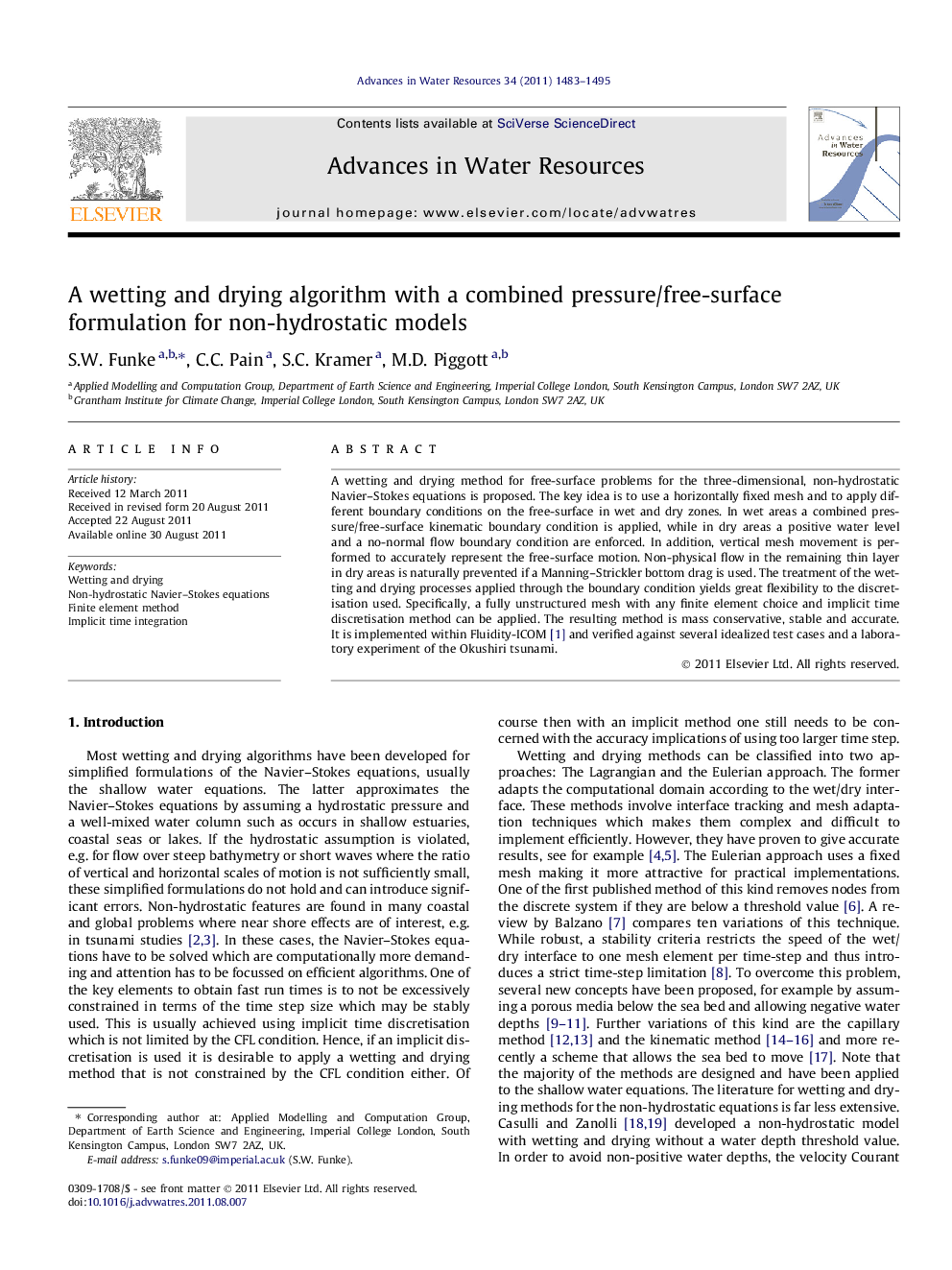| Article ID | Journal | Published Year | Pages | File Type |
|---|---|---|---|---|
| 4525970 | Advances in Water Resources | 2011 | 13 Pages |
A wetting and drying method for free-surface problems for the three-dimensional, non-hydrostatic Navier–Stokes equations is proposed. The key idea is to use a horizontally fixed mesh and to apply different boundary conditions on the free-surface in wet and dry zones. In wet areas a combined pressure/free-surface kinematic boundary condition is applied, while in dry areas a positive water level and a no-normal flow boundary condition are enforced. In addition, vertical mesh movement is performed to accurately represent the free-surface motion. Non-physical flow in the remaining thin layer in dry areas is naturally prevented if a Manning–Strickler bottom drag is used. The treatment of the wetting and drying processes applied through the boundary condition yields great flexibility to the discretisation used. Specifically, a fully unstructured mesh with any finite element choice and implicit time discretisation method can be applied. The resulting method is mass conservative, stable and accurate. It is implemented within Fluidity-ICOM [1] and verified against several idealized test cases and a laboratory experiment of the Okushiri tsunami.
► A wetting and drying method for the Navier–Stokes equations is developed. ► The domain is horizontally fixed but moves vertically with the free-surface elevation. ► The wet/dry treatment is effected using different boundary conditions on the surface. ► Mass conservation is proved for a pressure-correction method. ► Several numerical tests show the accuracy and robustness of the proposed scheme.
